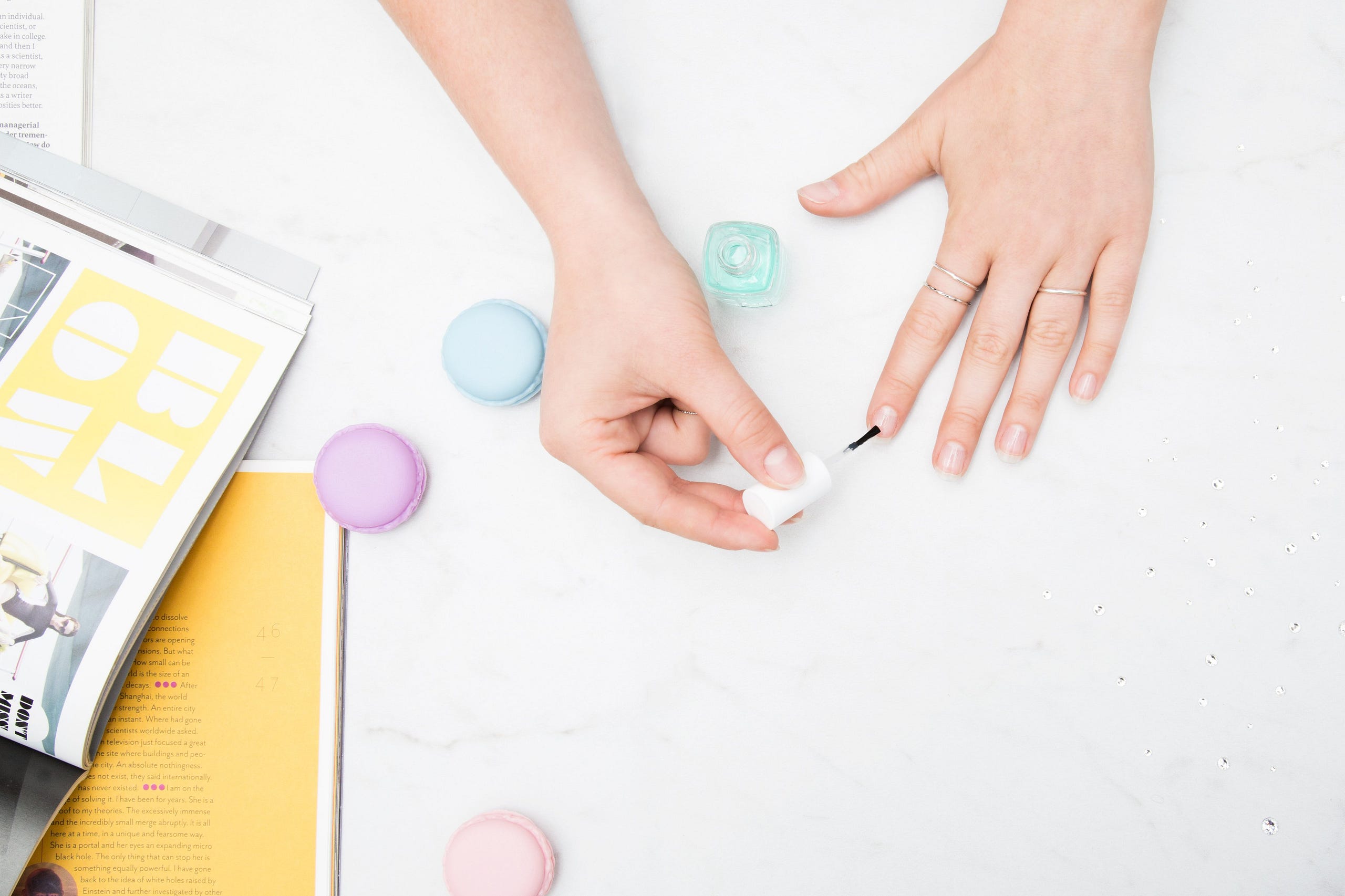Think Dirty Ingredient Breakdown: Nail Polish ?

Welcome back to another edition of the Think Dirty ingredient breakdown, where we decode all types of controversial, interesting, and common ingredients found in our everyday products.
Today, we’ll look at several ingredients in a product used by millions of people daily: nail polish. Although nobody really needs nail polish, many people (ourselves included) get their nails done on a semi-regular basis. With each application, we could be unintentionally exposing ourselves to the harmful chemicals most polish unfortunately contains. Of course, this is more dangerous for people that work in nail salons, who are exposed to these chemicals on a daily basis.
To achieve different shades, companies almost exclusively use Coal Tar Dyes. These are listed on an ingredient list using the letters “CI” followed by 5 numbers. Not all coal tar dyes are created equal. Since each individual dye is a different combination of ingredients and chemicals, there is no real way to know what the dye actually contains. Some are known to be safe, some aren’t. With especially unclear names, it is almost impossible to decipher which are which.
Most common nail polishes like Essie are something called “3-free”, meaning they are formulated without dibutyl phthalate (DBP), toluene, and formaldehyde. If it wasn’t getting confusing enough already, “5-free”, “7-free” and now all the way up to “15-free” polishes also exist. “5-free” polishes exclude formaldehyde resin and camphor as well, while 7-free, 9-free, etc. formulas can differ in the ingredients they leave out.
Below are the ingredients of the Essie shade “Fiji”. As you can see, the list is kind of a mess to look at, much less understand what each ingredient is. We’re only going to focus on a few key ingredients in here that are found in most Essie shades. You’ll also find these ingredients in most OPI polish, another nail salon staple.

If you want a closer look at each ingredient on this list, search “Essie” on the Think Dirty App and select the shade you’re interested in.
Benzophenone-1 (you’ll find it in the second line) is a known toxic ingredient. The International Agency for Research on Cancer classified the substance as a Group 2B carcinogen, meaning it is possibly carcinogenic to humans. According to the Agency, there was no data available to evaluate the carcinogenic potential of Benzophenone in humans, but in animals, there was sufficient evidence to classify benzophenone as a carcinogen. Unfortunately, we absorb Benzophenone-1 fast and it bioaccumulates in our bodies, meaning it builds up over time. A 2013 toxicology study found that Benzophenone-1 was not only a potential endocrine disruptor but also increased ovarian cancer cell growth in human lab cells and in mice. Of course, there’s only a tiny amount in nail polish, so exposure is limited and dependant on the frequency of use.
It’s rated an 8 on Think Dirty because of the potential carcinogenicity, and the toxic effects the ingredient has had on animals in research studies concerns us. It also has harmful effects on aquatic life and can disrupt fish hormonal and reproductive functioning when it inevitably makes its way into the water system.
Formaldehyde Resin is a mix of formaldehyde (a known human carcinogen) and Toluenesulfonamide. There is little research on the potential health impacts of routine exposure to this ingredient, so the effects it could have are still kind of a mystery. There are many reported cases of allergic reactions and contact dermatitis after exposure to this ingredient so if you tend towards sensitive skin, it might be best to steer clear.
Camphor is restricted to a concentration limit of 3% in products in Canada due to its toxicity. If Camphor is ingested, it can be toxic to the central nervous system and kidneys and cause a whole variety of issues. It also can irritate the eyes and skin. Long story short, not super safe in large doses. Though not known to be a carcinogen, the toxic effects are significant.
So where does all this leave us? There are very few nail polish brands that don’t use Benzophenone-1, and if they don’t, they usually have a fair share of other toxic ingredients in place. Some good brands to check out are Zoya, Kure Bazaar, Benecos, and Piggy Paint for the little ones. These brands avoid the ingredients noted in this article as well as many other common toxins.
Of course, nobody’s perfect. We like to get our nails done and use whatever the salon has available. Plus, the alternatives are often more expensive. Next time you treat yourself to a manicure, think about bringing your own, non-toxic polish. Above all we just want you to be safe and informed!
Disclosure: We are a professional review and product rating website and mobile app that receives compensation from the companies whose products we review and rate. We are independently owned and the opinions expressed here are our own interpretation of a trusted source.

